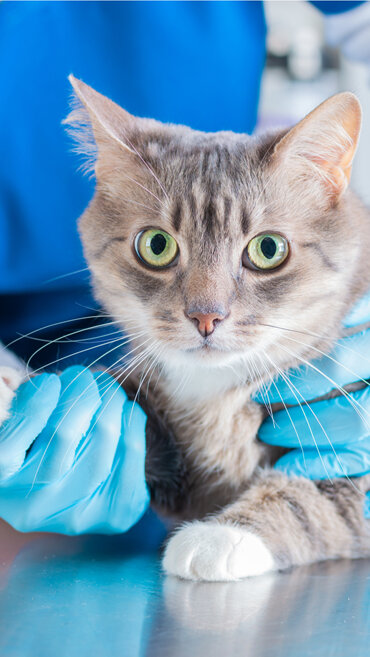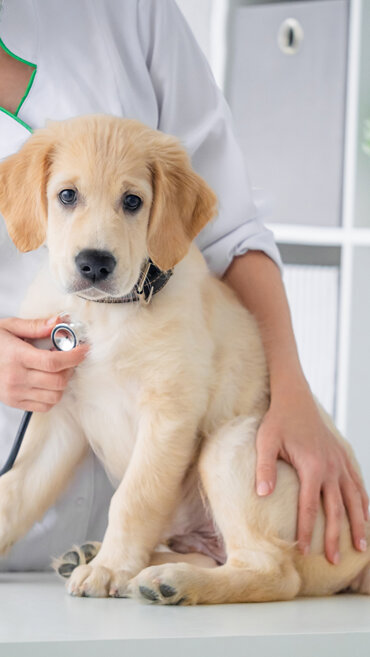Vets and Pets Ltd
St Lukes Veterinary Centre is one of the most trusted veterinary clinics in Auckland. Top quality care for your pets. Call St Lukes Veterinary Centre! Local service.

To ensure your pet can properly process and eliminate an anesthetic agent, we run tests to confirm that your pet’s organs are functioning properly and to find possible hidden health conditions that could put your pet at risk. Fo animals over 7 years of age we routinely perform this as part of our preanaesthetic workup. For animals under 7 years of age it is optional but reccomended
THE TOP FOUR REASONS TO TEST YOUR PET BEFORE ANAESTHESIA:
Enjoy peace of mind.
Testing can significantly reduce anesthetic and surgical risk.
Detect hidden illness.
Healthy-looking pets may be hiding signs of a disease or ailment. Testing helps detect this kind of illness so we can avoid problems with anesthesia.
Reduce risks and consequences.
If the preanesthetic testing results are normal, we can proceed with confidence. If not, we can alter the anesthetic procedure or take other precautions to safeguard your pet’s health. Proper protocols and fluids ensure a faster recovery time for your pet.
Protect your pet’s future health.
These tests become part of your pet’s medical record, providing a baseline for future reference.

Complete Blood Count (CBC)
A CBC includes an absolute reticulocyte count, a five-part
white blood cell differential, red blood cell count and platelet count, and it provides detailed information about each of these different cell types. Anemia is the most common blood disorder in pets and is defined by a decrease in the number of red blood cells. An absolute reticulocyte count may help identify an underlying disease process and may also help to determine whether an anemic pet is responding to treatment or not. The total white blood cell count, along with individual
counts of the five different types of white blood cells, can help identify underlying stress, inflammation, an inability to fight infection and, potentially, leukemia. Low platelet numbers can indicate a potential bleeding problem. It might be advised that surgery be delayed if anemia, inflammation or a low platelet count is present, as these conditions may cause serious anesthetic, surgical and postoperative complications.

Albumin (ALB) A protein that is produced
by the liver. Reduced levels of this protein can
point to chronic liver, kidney, inflammatory or
intestinal disease.
Alkaline Phosphatase (ALKP) An enzyme
present in multiple tissues, including liver and
bone. Elevated levels can indicate liver disease,
Cushing’s syndrome or abnormalities from
steroid therapy.
Alanine Aminotransferase (ALT) An enzyme
that becomes elevated with liver cell injury.
Amylase (AMYL) An enzyme produced by
the pancreas. The pancreas secretes amylase to
aid in digestion. Elevated levels in the blood can
indicate pancreatic disease.
Blood Urea Nitrogen (BUN) BUN is produced
by the liver and excreted by the kidneys.
Abnormally high levels can indicate kidney
disease or dehydration, and low levels can be
associated with liver disease.
Calcium (Ca+) Increased levels can be
seen with diseases of the parathyroid gland
and kidneys, or as an indicator of certain
types of tumors.
Cholesterol (CHOL) Elevated levels of
cholesterol are seen in a variety of disorders,
including hypothyroidism and liver or kidney
disease.
Creatinine (CREA) Creatinine is a by-product
of muscle metabolism and is excreted by the
kidneys. Elevated levels can indicate kidney
disease, urinary tract obstruction or dehydration.

Gamma-Glutamyl Transferase (GGT)
Increases in GGT may indicate a problem with
the liver, gall bladder and associated structures
Globulin (GLOB) A protein that is measured
to help assess an animals immune function and
response to infectious and inflammatory disease
Glucose (GLU) High blood glucose levels can
indicate diabetes. In cats, high levels can also
indicate stress, which can be a result of the trip
to the veterinary hospital. Low levels can indicate
liver disease, infection or certain tumors.
Lipase (LIPA) Elevated levels of lipase in the
blood, along with a clinical assessment, can
signify possible pancreatitis, gastrointestinal
disease and abnormalities from certain drug
treatments.
Phosphorus (PHOS) Elevated phosphorus
can be an indicator of kidney disease.
Total Bilirubin (TBIL) Bilirubin is a breakdown
product of hemoglobin, as well as a component
of bile. Blood bilirubin levels are useful in
indicating liver disease and may help identify
certain types of anemia.
Total Protein (TP) The level of total protein
can indicate a variety of conditions, including
dehydration, inflammation and diseases of
the liver, kidney or intestine.
ALB/GLOB Subtle changes in this
ratio may alert the veterinarian to serious
infectious or inflammatory disease, even
when albumin and globulin are at normal
levels.
BUN/CREA Subtle changes in this ratio
may alert the veterinarian to serious disease
of the kidneys or intestines or may reflect
dehydration even when the BUN and
creatinine are at normal levels.
Sodium (Na+), Potassium (K+), Chloride (Cl–) Normal electrolyte values are vital to an animal’s
health. Abnormal levels can be life-threatening. Electrolyte tests are important when evaluating vomiting,
diarrhea, dehydration and cardiac (heart) symptoms.
Thyroxine (Total T4) This is a measurement of the level of thyroid hormone circulating in the blood
and is helpful in identifying thyroid disease. Thyroid disease occurs in both dogs and cats and can have
a serious impact on health if left untreated. Testing is especially important in cats older than 7 years.